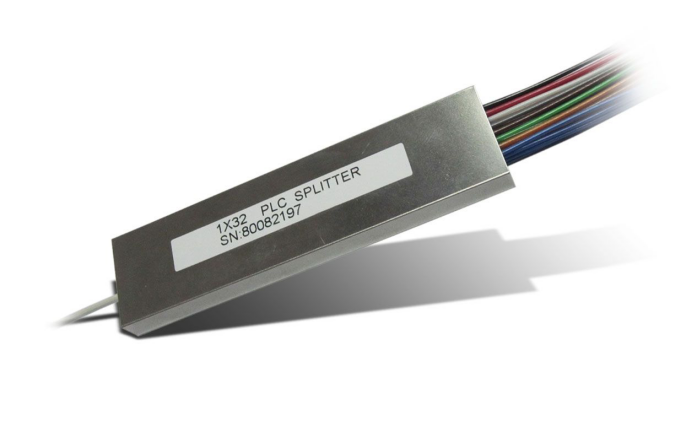The Comparison Between PLC Splitter and FBT Splitter
(2024年04月03日)https://www.unitekfiber.com/the-comparison-between-plc-splitter-and-fbt-splitter.html
Optical splitter are one of the most important passive components in fiber optic links, and are fiber optic tandem devices that can have multiple inputs and multiple outputs. The commonly used Mx N indicates that an optical splitter has M input terminals and N output terminals.
The Working Principle of Optical Splitter
When a single-mode fiber conducts optical signals, the light energy is not completely concentrated in the fiber core, and a small amount is transmitted through the cladding close to the fiber core. In other words, if the cores of the two fibers are close enough, the mode field of the light transmitted in one fiber can enter the other fiber, and the optical signal is redistributed in the two fibers.
At present, there are two types of optical splitters that can meet the needs of optical splitting: one is a Planar Lightwave Circuit(PLC) splitter produced based on optical integration technology. Another is a Fused Biconical Tape (FBT) splitter produced by a traditional optical passive device. Manufacturer uses a traditional Fused Biconical Tape process. These two types of devices have their own advantages. Users can choose these two types of light splitting devices reasonably according to different applications and needs. UnitekFiber makes a brief introduction to PLC splitter and FTB splitter.
PLC(Planar Lightwave Circuit ) Optical Splitter
The Comparison Between PLC Splitter and FBT Splitter
The planar lightwave circuit technology is to use semiconductor technology to make optical lightwave branching devices. The shunting function is completed on the chip. It can achieve up to 1X32 shunts on a chip. Then, the input and output multi-channel fiber arrays are coupled at the two ends of the chip.
The advantages of PLC Optical spliiter are the loss is not sensitive to the wavelength of the transmitted light, and it can meet the transmission needs of different wavelengths. The light is evenly distributed, and the signals can be evenly distributed to users. It is in a compact structure and small size, can be directly installed in the existing various transfer boxes without leaving a large installation space. There are many shunt channels for a single device, which can reach more than 32 channels. The PLC splitter multi-channel cost is low.
Fused Biconical Tape (FBT) Splitter
The Comparison Between PLC Splitter and FBT Splitter
Fused Biconical tapering technology is to bundle two or more optical fibers together, then melt and stretch them on a tapered machine, and monitor the change of the splitting ratio in real time. After the splitting ratio reaches the requirements, the melting and stretching ends. One end retains one fiber (the rest is cut off) as the input, and the other end is used as the multiple output.
The main advantages of FBT Splitter are the tapered coupler has more than 20 years of history and experience. Many equipment and processes can be used, and the development expenditure is only a few tenths or even a hundredth of the PLC splitter. The split ratio can be monitored in real time as required, and unequal splitters can be made.
The main disadvantages of FBT Splitter are the loss is sensitive to the wavelength of the light, and the device is generally selected according to the wavelength. This is a fatal defect in the use of the triple play, because the optical signals transmitted in the triple play are 1310nm, 1490nm, 1550nm wavelength signal. The light unifornity of FBT splitter is poor, the nominal maximum difference of 1X4 is about 1.5dB, and the difference is greater than 1x 8, which can not ensure uniform light splitting and may affect the overall transmission distance. The insertion loss has a large amount of change with temperature . The FBT splitter (such as 1x 16, 1x32) is relatively large, the reliability will be reduced, and the installation space is limited.
These two devices of PLC splitter and FBT splitter have their own advantages in terms of performance and price, and both process technologies are constantly being upgraded to continuously overcome their shortcomings. The FBT splitter is solving the problems of small number of disposable taper and poor uniformity. And the PLC splitters are also making unremitting efforts to reduce costs. At present, the cost of the two devices above 1X8 is almost the same. With the increase of split channels, the price of planar waveguide splitters is better.
The Comparison Between PLC Splitter and FBT Splitter
How to choose these two devices of PLC splitter and FBT splitter depends on the application and user requirements. In some applications where volume and light wavelength are not very sensitive, especially when there are few branches, it is more economical to choose a FBT splitter. For independent data transmission, a 1310nm FBT splitter is used. TV video network can choose 1550nm FBT splitter. In the case of three-in-one, FTTH, etc. that require multiple wavelengths of optical transmission and many users, an PLC splitter should be selected.
If you need more information or support on fiber optic products by fiber cable manufacturers, please don’t hesitate to contact us sales@unitekfiber.com, we will try our best to support you.
There are many fiber optic accessories suppliers, but we are one of the best choices for you.
- «前のできごと |
- 次のできごと»
- このできごとのURL:



コメント